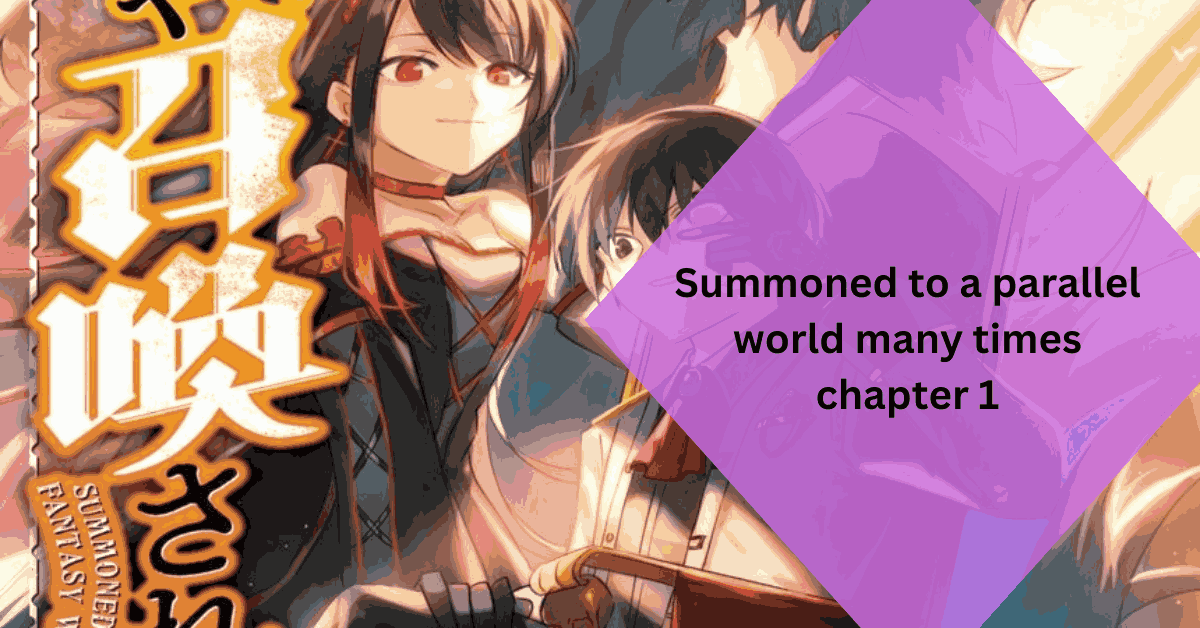Summoned to a parallel world many times chapter 1
The isekai genre has taken the manga and light novel world by storm, captivating readers with fantastical tales of characters being summoned to parallel worlds. One such gripping series that has gained immense popularity is “Summoned to a Parallel World Many Times.”
In this article, we delve into the intricacies of Chapter 1, exploring the key themes and elements that make this series a standout in the isekai realm.
Summoned to a parallel world many times chapter 1Overview:
“Summoned to a Parallel World Many Times” kicks off with a compelling introduction to our protagonist, Summoned to a parallel world many times chapter 1, an ordinary high school student who finds themselves transported to a mysterious and fantastical realm.
Chapter 1 sets the stage for the overarching narrative, introducing readers to the rules of this parallel world and the challenges our protagonist is bound to face.
The chapter masterfully blends elements of adventure, magic, and the unknown, creating an immersive experience for readers. The seamless integration of world-building and character development in Chapter 1 lays the foundation for the epic journey that unfolds as the series progresses.
Themes Explored:
A central theme in “Summoned to a Parallel World Many Times” is the juxtaposition of the ordinary and the extraordinary.
The protagonist’s initial bewilderment and disbelief at being summoned to another world resonate with readers who can empathize with the sudden upheaval of their normal lives. This theme is revisited throughout the series, reinforcing the relatability of the characters despite the fantastical setting.
Another prominent theme is the discovery of inner strength and resilience. As [Character Name] navigates the challenges of the parallel world, they are forced to confront their fears and insecurities.
This journey of self-discovery forms a compelling narrative arc that adds depth to the character and resonates with readers on a personal level.
Magic System and World-Building:
Chapter 1 introduces readers to the intricacies of the magic system in the parallel world. The author skillfully weaves together elements of traditional fantasy magic with unique and innovative concepts, creating a system that is both familiar and refreshing.
The introduction of magical creatures, artifacts, and spells adds layers to the world-building, captivating readers with the endless possibilities of this fantastical realm.
The manga’s vivid illustrations play a crucial role in bringing the magic system to life. The artist’s interpretation of spellcasting, magical battles, and enchanted landscapes enhances the overall reading experience, immersing readers in a visually stunning world.
Character Dynamics:
The dynamics between the characters in Chapter 1 set the stage for the relationships that will unfold throughout the series.
Whether it’s alliances forged out of necessity or the budding friendships that develop, the interpersonal dynamics add a layer of complexity to the narrative. The manga’s visual storytelling captures the nuances of facial expressions and body language, conveying the characters’ emotions with depth and subtlety.
The use of recurring themes such as friendship, loyalty, and betrayal further enriches the character dynamics. These themes serve as a driving force behind the characters’ decisions and actions, creating a narrative that is both engaging and emotionally resonant.
Artistic Expression in the Manga Adaptation:
The transition from light novel to manga brings “Summoned to a Parallel World Many Times” to life in a visually stunning way. The manga adaptation, with its detailed illustrations and dynamic panel layouts, enhances the storytelling experience.
The artist’s interpretation of the parallel world’s landscapes, creatures, and magical elements adds a visual spectacle that complements the narrative.
The use of visual cues and artistic symbolism in the manga adaptation serves to reinforce key themes and motifs from Chapter 1. The careful attention to detail in character designs and background art contributes to the overall immersion, allowing readers to feel a deeper connection to the parallel world.
Conclusion:
“Summoned to a Parallel World Many Times” captivates readers with its engaging narrative, well-developed characters, and imaginative world-building. Chapter 1 serves as a compelling introduction to the series, setting the stage for a journey filled with magic, adventure, and self-discovery.
The manga adaptation enhances the storytelling experience, bringing the parallel world to life with vivid illustrations and dynamic visual elements. As the series unfolds, readers can expect a rollercoaster of emotions, epic battles, and moments of profound growth for the characters.
In conclusion, “Summoned to a Parallel World Many Times” stands as a shining example of the isekai genre, offering readers a thrilling escape into a world where the ordinary becomes extraordinary, and the possibilities are limited only by the imagination of the author and the skill of the artist.

